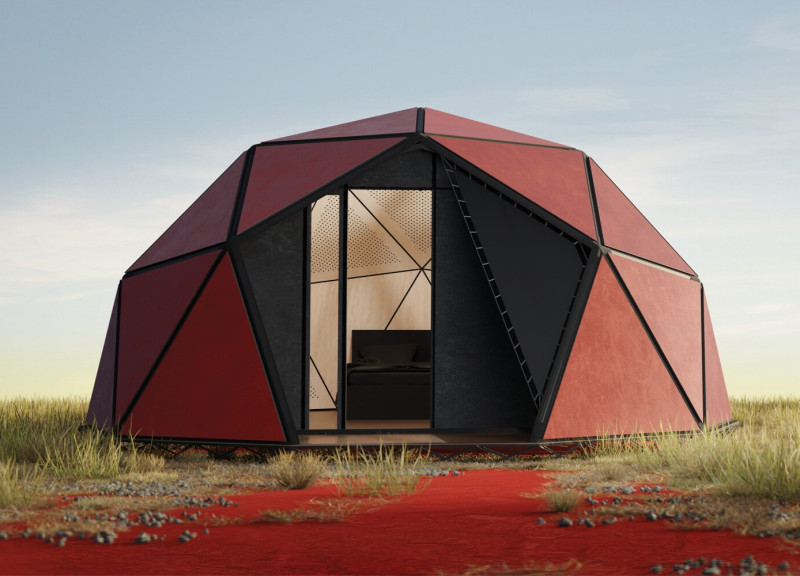5 key facts about this project
## Overview
Located in Northern Australia, the Gunyah project is designed to reinforce the connection between Aboriginal communities and their ancestral lands. In a culturally significant context, this project integrates traditional forms with contemporary architectural practices, aiming to meet modern needs while acknowledging and respecting historical values.
## Spatial Configuration
The Gunyah employs a circular arrangement of geodesic dome structures, promoting community interaction and shared experiences. Each dome incorporates a defined communal space, reflecting traditional Aboriginal living practices and fostering unity among family groups. The spatial organization is inspired by Aboriginal art, with visual connections that emphasize interconnectedness, akin to a network of campsites.
## Material Selection and Sustainability
The materials chosen for the Gunyah highlight a blend of traditional building techniques and modern technology. Key components include insulated panels for thermal efficiency, plywood for warmth and acoustic comfort, a steel framework for structural integrity, composite panels for exterior resilience, and strategically placed glass to enhance natural lighting. This careful selection promotes ecological responsibility and resource efficiency, ensuring the Gunyah’s alignment with both cultural heritage and contemporary sustainability practices.





















































